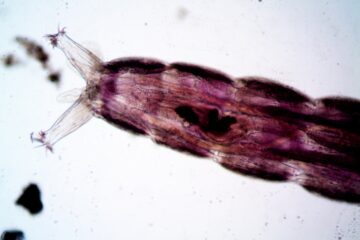![]()
Introduction
A branch of pathology called forensic pathology focuses on examining a dead body to ascertain the cause of death. In Europe, forensic pathology has existed since the 16th century. A medical examiner typically performs the autopsy during the investigation of criminal law cases and civil law cases in several countries. Coroners and health officials are frequently consulted to confirm the identity of a dead person. A presentation of medical jurisprudence is forensic pathology. The study of disease and its causes is known as pathology. When a death is unexpected or the police are unsure that it could not have occurred for other causes, forensic pathology includes determining the cause of death. To be successful in their work, forensic pathologists need to be trained in a variety of subjects. They employ a wide range of techniques, such as performing autopsies, which have numerous techniques of their own. A forensic pathologist may collect X-rays, samples of bodily fluids, tissues, and samples of bacteria from the body when performing an autopsy. The forensic pathologist employs the phases of death as an additional technique during the autopsy to examine both the time of death and the length of time the body has been dead.
Brief history of Forensic Pathology
Since the beginning of time, establishing the cause of death has been crucial in determining the appropriate punishment for crimes committed. Following Julius Caesar’s assassination, an autopsy to ascertain the cause of death is believed to have been performed (44 BC). Autopsies have evolved along with medical advancements over time. The normal anatomy, histology, and pathology of human tissue became better known as a result of advances in anatomical knowledge beginning in the 16th century and the introduction of the microscope in the 17th century. It is known that in 1286, the first pathological anatomy autopsy was carried out. Forensic pathology is necessary because of the significance of forensic medicine and pathology in the process of determining the cause of death and resolving legal events, which has been known for hundreds of years. Thus, pathological exams are now a required component of autopsies according to current international autopsy regulations. When Jean Lobstein (1777-1835) was assigned to the Professorship of Pathology at the University of Strasburg in 1819, pathology was officially recognised for the first time as a separate scientific field. The discipline of pathology as a medical specialism emerged in the later half of the nineteenth century[1].
The autopsy, which is the post-mortem examination of a deceased corpse is the primary responsibility of the forensic pathologist. The Greek word for autopsy is “seeing for oneself.” A thorough medical examination of a person’s body and organs after death to ascertain the cause of death is known as an autopsy. The medical autopsy and the forensic (medicolegal) autopsy are the two types of autopsies. People who have passed away from natural ailments are the subjects of medical autopsy cases. Therefore, medical professionals look into the specifics of that natural death using the autopsy. To meet the law, a forensic autopsy is however conducted in unique situations like a suspected death.
Forensic pathology has two branches, namely anatomical pathology and clinical pathology
Anatomical Pathology[2]
It is a branch of medicine that examines the morphology of tissues taken from living or dead people using gross, microscopic, chemical, immunologic, and molecular analysis. Autopsy pathology, surgical pathology, and cytopathology are the three separate subfields of anatomical pathology. A forensic pathologist’s focus will be nearly entirely on conducting autopsies. It focuses on changes to the human body’s structural makeup.
Clinical Pathology
An expert in this discipline, a forensic pathologist, will be in charge of doing laboratory analyses and interpretations of patient specimens, such as tissue, blood, urine, and other bodily fluids. Chemistry, haematology, microbiology, blood banking, toxicology, and immunology are the main subdivisions of clinical pathology. In a nutshell, it deals with the laboratory analysis of bodily sample removal.
Qualification in Forensic Pathology in India
The specialty is also known as Forensic Medicine or Legal Medicine in India. After receiving a medical degree (MBBS), a student must complete three years of study and training, including thesis research, in order to receive an MD (Forensic Medicine). A Diplomat of National Board may also be obtained by passing the board test offered by the National Board of Examinations (DNB).
The Department of Forensic Medicine at several medical colleges houses the majority of the professionals. Assistant Professor (Lecturer), Associate Professor (Reader), and Professor are the different levels of positions. In addition to instructing medical students, the specialists’ employment duties also include doing autopsy and clinical forensic tests.
Forensic Chemistry
The use of chemistry and forensic toxicology, one of its subfields, in a courtroom is known as forensic chemistry. Organic and inorganic analyses, toxicology, arson investigation, and serology are all included in forensic chemistry. Each analysis method makes use of specialised methods and equipment. some examples of evidences in forensic chemistry are Identification of alcohol, narcotics, designer and commonly abused drugs like LSD, Cannabis, Opium Derivatives, Cocaine and others present in an unknown sample, Identification of synthetic and natural poisons such as arsenic, mercury, barium, cadmium, lead, croton, datura, calotropis, and others, Examination of petroleum products and etc.
In order to examine small amounts or individual things on-site with high accuracy levels, forensic chemists employ cutting-edge equipment like nuclear magnetic resonance imaging (NMRI) and gas chromatography-mass spectrometry (GCMS).
In cases involving drugs or alcohol, forensic chemists also support or contradict the allegations of the investigators. Since there are particular blood alcohol content cutoffs where penalties start or increase, correct measurement might be crucial in offences like drunk driving. Forensic chemists’ tools can detect minute quantities
History of Forensic Chemistry
The development of scientific techniques for the identification and analysis of poisons used in homicides is documented in the history of forensic chemistry. Evidence of the usage of poisons comes from the ancient Greeks, Romans, and Egyptians.
James Marsh, a British scientist, invented the analytical test known as the Marsh test for arsenic as the first toxin (1752). The next step was made possible by Jean Stas’s creation of the Stas’s technique (1850), which was used to locate vegetable alkaloids in human tissues. Numerous forensic chemical analysis procedures were made easier by the introduction of a wide variety of instrumental techniques. Botanist Makhail Tsvet discovered paper chromatography in 1906 and found it beneficial for separating particular compounds from mixtures.
It was advantageous that Joseph Fraunhofer created the spectroscope in 1859 and used it to identify minute chemical fragments of evidence. Technology advancements have made it possible for forensic chemists to identify unidentified chemical trace fragments of evidence discovered at the crime scene using a variety of instrumental approaches. Toxins like cadmium and arsenic may now be found thanks to Alan Wash’s creation of the atomic absorption spectrophotometer for the analysis and detection of trace metal elements.
Methods used in Forensic Chemistry
Spectroscopy
This method includes exposing a body to electromagnetic radiation and then observing how it responds. It is used to measure samples using the absorption spectrum or to examine substances like pesticides found in plant life, which will exhibit a range of colours.
Chromatography
It simplifies complex investigations where analysts need more information than a single analytical procedure can supply by dissecting mixtures into their constituent parts that can be conveniently studied independently.
Qualification in Forensic Chemistry in India
The forensic chemistry programme is an intriguing one that draws from several branches. Candidates who are interested in the programme must have completed their Higher Secondary Examinations with at least a 40 percent grade, and they must have come from a reputable board, since this will give you a good idea of how qualified they are. Additionally, the applicants must be at least 22 years old on the admissions date. The master’s level degree in forensic chemistry programme takes two to three years to complete. Candidates who have completed this course are hired as forensic scientists with a focus on the Chemistry department by a variety of NGO’s and government organisations.
Conclusion
Investigating a corpse to determine the cause of death is the subject of forensic pathology. A medical examiner or forensic pathologist conducts a post mortem examination, typically during the investigation of criminal law matters and civil law cases in some jurisdictions. Even though modern tools and technology have increased the reliability of forensic pathology investigations, new patterns in crime, drug use, and disease/disorder provide a continuing threat to modern pathology. Given the crucial role that forensic pathology plays in today’s criminal investigation, more research is required to recognise its contribution and to enhance the system’s efficacy. In the context of a criminal investigation, forensic chemistry has a broad application. It has aided in the resolution of numerous instances where traditional techniques were unable to offer any information on the identity or place of origin of a suspect, victim, or object present at particular crime scenes. The field of forensic chemistry is very broad and encompasses many subjects, including biochemistry, chromatography, immunoassay, etc. These topics are used to generate reliable results by adhering to proper protocol during sample collection at various stages, beginning with the gathering of evidence and ending with analysis.
References:
[1] Tae M. Choo, Young-Shik Choi, Historical Development of Forensic Pathology in the United States, https://synapse.koreamed.org/upload/synapsedata/pdfdata/0018kjlm/kjlm-36-15.pdf.
[2] V.Sutharshana, Forensic Pathology, International Journal of Pharmaceutical Science Invention, Volume 2 Issue 12, December 2013, PP.07-11, https://www.ijpsi.org/Papers/Vol2(12)/C021207011.pdf.



0 Comments